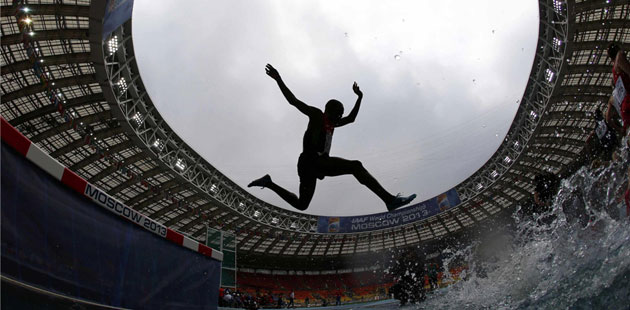High-level visits define Sino-Indian ties
Updated: 2013-10-21 07:11
By Parama Sinha Palit (China Daily)
|
|||||||||||
Indian Prime Minister Manmohan Singh's three-day visit to Beijing from Oct 22, following the visit of Premier Li Keqiang to New Delhi in May, is the first instance of reciprocal visits by the two heads of government in the same year since 1954. China's first premier, Zhou Enlai, and India's first prime minister, Jawaharlal Nehru, visited India and China in the same year, that is, in 1954.
Singh's visit is expected to set the stage for enhanced bilateral engagement between the two countries with key regional and bilateral issues figuring on his agenda. India figures in China's new "major-nation diplomacy" - an initiative launched by the new leadership after taking office in March 2013 - with China being keen on strengthening ties with its western neighbor.
High-level and state visits have been acting as major confidence-building measures between the two countries for a long time. India established diplomatic relations with the People's Republic of China barely six months after it was established in October 1949. But even before the two countries forged diplomatic ties, Nehru, as a young Congress leader, visited China in the fall of 1939. The visit was cut short by the outbreak of World War II. Keeping the tradition alive in the last few years, high-level visits between China and India have picked up sharply and have become an important diplomatic tool in enhancing bilateral relations.
In an interconnected and globalized world, cooperation is often necessary and a pragmatic choice over confrontation. Such necessity has motivated China and India to increase their engagement with each other. Both governments have been increasingly active in this regard with economics and trade being the major factors behind their engagement.
In fact, high-level state visits aiming to increase economic exchanges were started by the visit of the former Indian minister of commerce Murasoli Maran to China in 1998. Since then, several visits by top leaders from both sides with economics high on their agendas have taken place. India is now the only country other than the United States with which China has instituted Strategic Economic Dialogue since 2011, highlighting the significance it attaches to the economic relationship.
The rapid increase in state visits and the interface between its top leaders is evident from the fact that then-premier Wen Jiabao and then-president Hu Jintao met Singh on 10 occasions in 2010 alone. Indeed, Singh's forthcoming visit to China will pave the way for his third meeting with President Xi Jinping this year.
High-level visits are an important part of the two countries' national foreign policies. China and India continue to use these visits for public diplomacy not only bilaterally but also with other countries. The new Chinese leadership has been particularly eager to consolidate partnerships across the world through these high-level interactions.
While Xi impressed the West with his whirlwind tours immediately after taking office in March, Li chose India and South Asia as his first foreign destination. His visit to New Delhi in May, soon after the three-week-long border impasse in April 2013, underlined China's willingness to ease tensions and work with India on various issues. India warmly welcomed Li without allowing the border spat to affect its evolving ties with China and also sent Defense Minister A.K. Antony to Beijing in July.This was the first visit by an Indian defense minister to China since then-defense minister Pranab Mukherjee, the current president of India, visited Beijing in 2006. Antony's visit is significant and signaled that both countries are willing to expand their engagement beyond economics, to interactions between the armed forces as well.
While contemporary foreign policy makes it a prerequisite to strengthen international communications, reinforcing engagement and contact with neighbors has become particularly important for countries like China and India. Both are countries with global ambitions, coupled with economic clout and strategic influence in the region.
High-level visits facilitate bilateral communication and engagement in a constructive fashion, helping to build trust and improve understanding. Public diplomacy, through state visits, is critical for peace and stability in the region - conditions that are essential for the two major Asian countries to maintain their economic progress and balance their strategic positions at the regional and global levels.
The author is a research associate at the China in Comparative Perspective Network Global.
(China Daily 10/21/2013 page9)
Today's Top News
Scientists requested government to plant GM crops
Travelers to Europe bypass attractions of Brussels
Li urges greater effort on reforms
'Constructive ideas' on thorny issues needed
US deal key to nabbing fugitives
JPMorgan, DOJ reaches $13b deal
As China's economy grows, so does reform call
Expanded property tax trials predicted
Hot Topics
Lunar probe , China growth forecasts, Emission rules get tougher, China seen through 'colored lens', International board,
Editor's Picks

|

|

|

|

|

|





